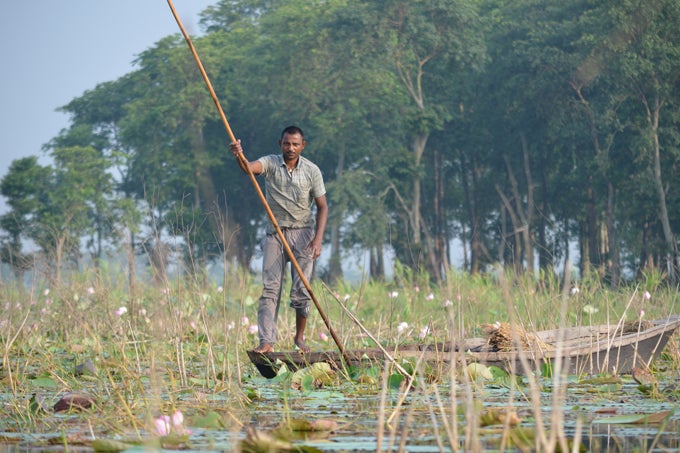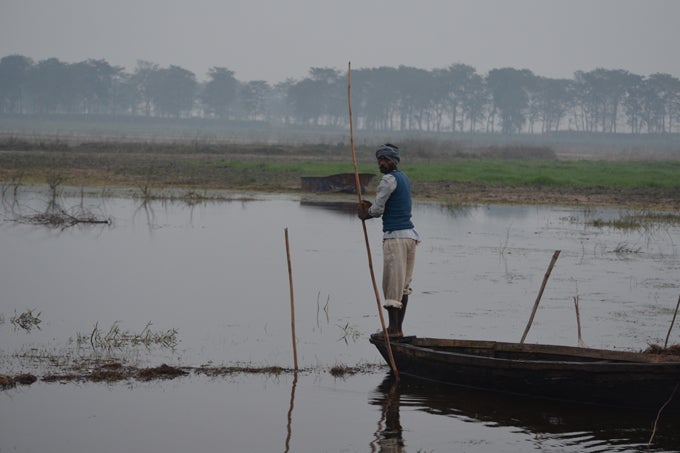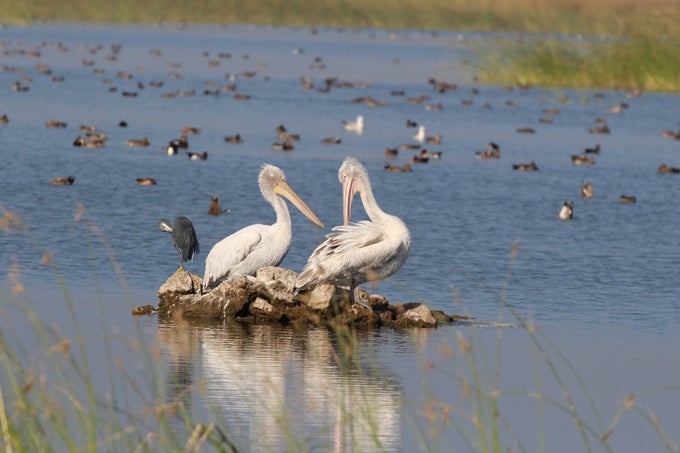Kanwar Jheel is the largest in a series of 18 wetlands spread across the Ganges flood plains in India’s north Bihar. For generations, these wetlands have been the mainstay for this densely populated region, enabling families to farm the fertile soil and fish in nutrient-rich waters.

During the monsoon, when the River Burhi Gandak - a Ganges tributary - overflows its banks, the wetlands absorb the runoff, protecting this extremely flood-prone region. When the rains are over, the water shrinks to one tenth the size, exposing marshes and grasslands that create a mosaic of habitats for a wide variety of flora and fauna.
In winter, over 60 species of duck and waterfowl visit these wetlands on their annual migration routes along the Central Asian Flyway.
In the 1950s, however, embankments were built to contain the river’s regular flood cycle. This fragmented the wetlands, altered natural water flows, and impaired the flood control services they provided.
During the 1970s, the wetlands were drained for farming. Traditional seasonal plantings gave way to the year-round cultivation of water-guzzling crops, placing tremendous pressure on the ecosystem.
No longer based on natural inundation, wetland farming has become highly dependent on ground water. As a result, water levels have depleted, the fish catch is down to a third of 1980s levels, and the number of visiting waterbirds has declined.
The shrinking resource base has jeopardized local livelihoods. Although Kanwar Lake became a bird sanctuary in 1989, frequent conflicts between farmers and fisherfolk have led many to move away as wage labor.
At the state government’s request, the World Bank conducted a study of the wetlands. The study has recommended the restoration of the wetlands’ natural hydrological regime by reconnecting the wetlands, and preventing artificial drainage. It has also advised that a comprehensive wetland inventory and monitoring system be put in place, biodiversity habitats be enhanced, sustainable culture fisheries be pursued and community livelihoods be diversified.



Join the Conversation